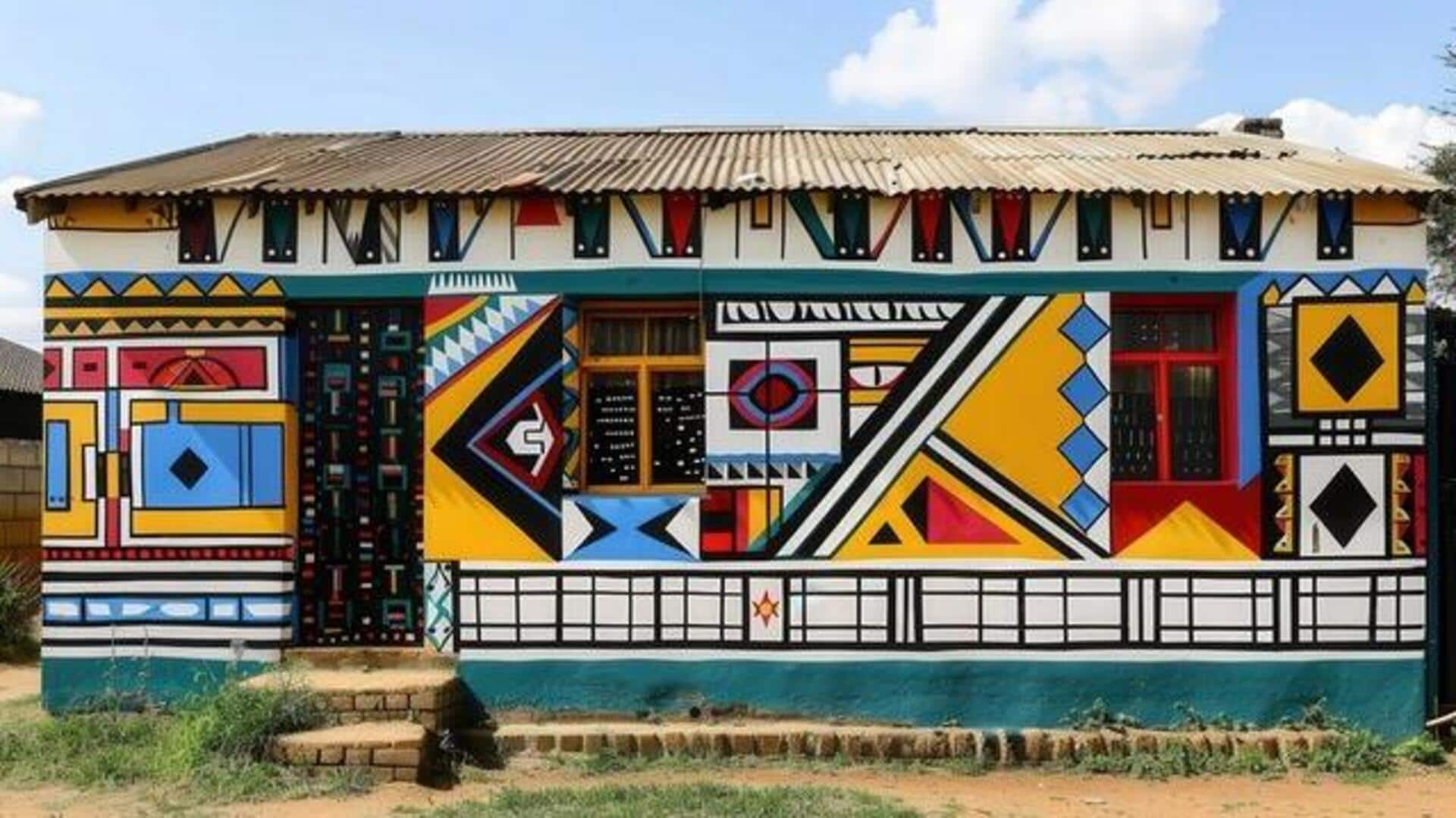
Ndebele house painting: Techniques and significance
What's the story
Ndebele house painting is a vibrant African art form that has been practiced for centuries. The tradition, which originated from the Ndebele people of South Africa, is characterized by its geometric patterns and bright colors. The paintings are not just decorative but also hold cultural significance, often telling stories or conveying messages about the community's history and beliefs. This article delves into the techniques, styles, and meanings behind Ndebele house painting.
Technique 1
Techniques behind Ndebele art
The Ndebele people use natural pigments from soil and plants to create their paints. The colors are mixed with water to achieve the desired consistency before applying them on walls. The artists use brushes made from grass or reeds to create intricate designs with precision. The technique requires skill and patience, as each layer must dry before another can be added.
Pattern 1
Geometric patterns in Ndebele paintings
Geometric patterns are the hallmark of Ndebele art. Triangles, squares, circles, and zigzags are commonly used shapes that form complex compositions on the walls of homes. These patterns are not random but symbolize different aspects of life such as fertility, protection, or social status within the community.
Color 1
Cultural significance of colors
In Ndebele culture, colors have particular meanings. Red could symbolize struggle or resistance, while blue may signify peace or harmony. Yellow can indicate wealth or prosperity, and green might represent growth or renewal. These color codes are used deliberately in paintings to convey specific messages to those familiar with their meanings.
Influence 1
Modern influences on traditional practices
While traditional Ndebele house painting remains strong, modern influences have also seeped in. Some artists now incorporate contemporary themes into their work, blending old with new. This evolution allows for cultural expression while preserving the essence of this unique art form. It continues to evolve with changing times without losing its roots.